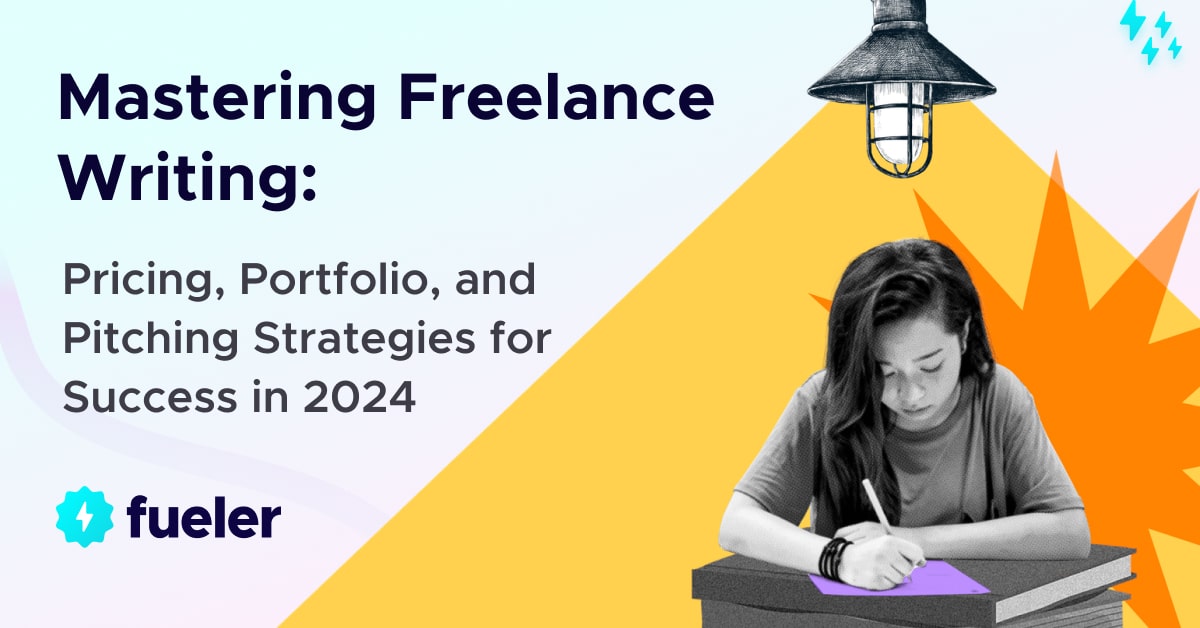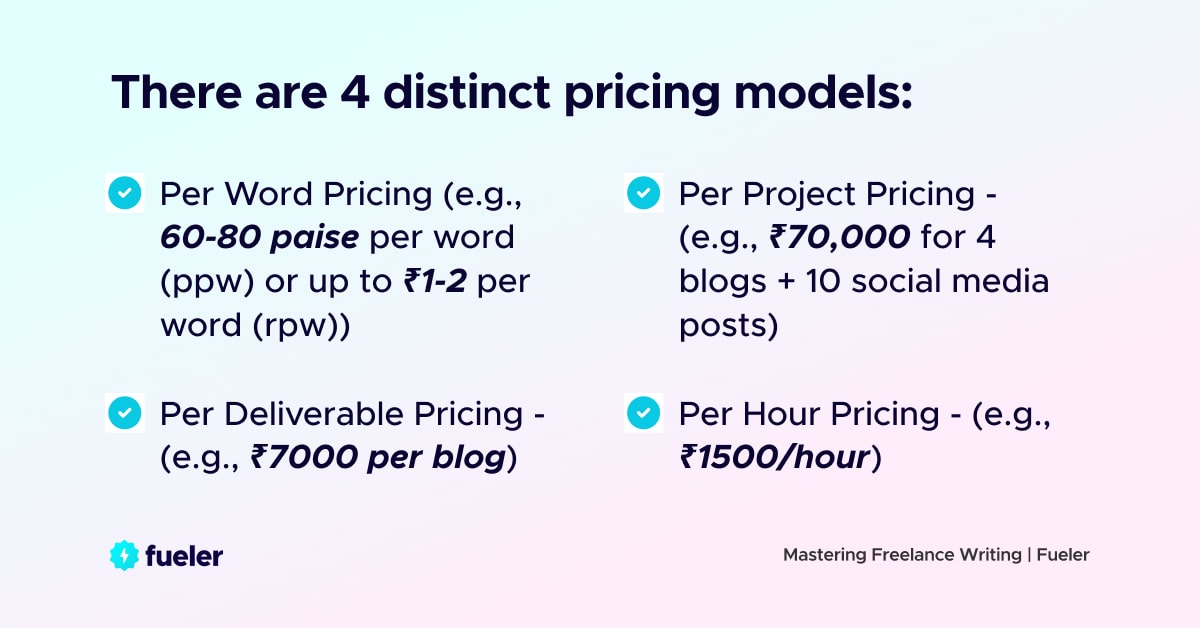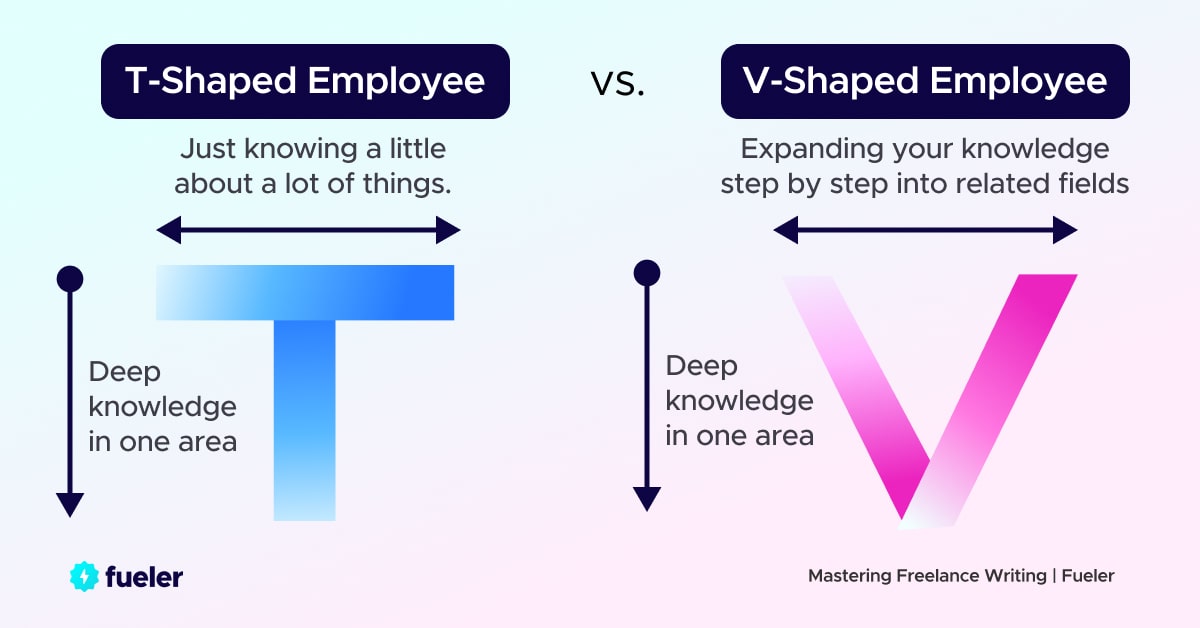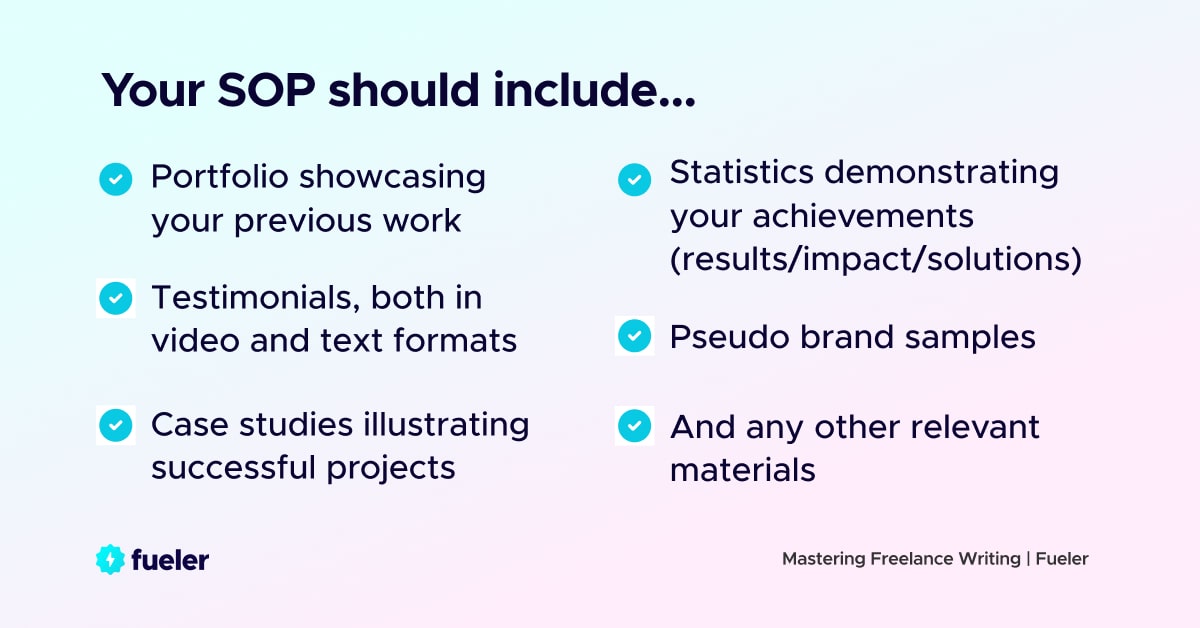Mastering Freelance Writing: Pricing, Portfolio, and Pitching Strategies for Success in 2024

Nikita Raikwar
27 Apr, 2024

For many writers out there, starting a freelance writing business can be daunting. Not because they lack skill, but because of the high competition and the fear of 'not getting enough clients' looming over their heads. And as a content marketing specialist that perennially scrolls through Linkedin and X, I've realised that the internet is flooded with endless opportunities. However, many of us fail to market ourselves effectively. This is precisely why it's crucial to understand how to create a content writing proposal, right from setting your writing rates, creating a diverse copywriting portfolio, and crafting pitches that sell.
To set the tone, I conducted interviews with a couple of highly successful freelance writers who are excelling in their field. They have valuable insights into the current market trends, and I sought their perspectives on the topic.
Step 1: Exploring Pricing For Your Content Writing Business
In a conversation with Aastha Kochar, Founder of Rank Scholars, and a successful freelance content marketer, we discussed pricing models, factors that determine pricing, and how to set your content writing rates in 2024 to grow a successful writing business.
Factors To Consider When Determining Prices
When it comes to determining pricing for content and copywriting projects, Kochar said, "I consider various factors when quoting a price, such as the approximate word count per project, the total number of blogs, the project's duration, the niche I'm writing for, whether it's ghostwritten or bylined, and if the piece requires SEO optimisation. Additionally, I take into account the level of detail in the client's brief—whether I need to conduct keyword research myself or if it's provided."
When considering pricing for content and copywriting projects, it's crucial to take into account each of these factors. Are you solely delivering a content piece, or are you also involved in the strategy and optimisation process? Is this content requiring minimal research, or does it necessitate working with subject matter experts (SMEs), conducting interviews with internal teams and external vendors, and incorporating statistics and graphs? All of these aspects contribute to the pricing of your project.
Different Pricing Models In The Industry:
Elaborating on the different pricing models that are effectively utilised in the industry, Aastha mentions four distinct models she has come across, namely, per-word, per-deliverable, per-project, and per-hour pricing.
Per Word Pricing: A beginner-friendly method to initiate your content writing business
Per Deliverable Pricing: A suitable method for uniform deliverables, especially when uncertain about the number of projects to be undertaken in a month.
Per Project Pricing: This is the most efficient method for signing monthly retainers, considering all project details.
Per Hour Pricing: While personally not utilised, it's a suitable model for uncertain project durations or when the scope of work is unclear
"I personally recommend using per-project pricing to help scale your writing business," she adds.
Your pricing model changes as you advance in your role as a writer. Personally, I started with a per-word pricing when solely writing off-page SEO blogs for other agencies, transitioned to per-deliverable pricing when writing website product descriptions for VistaPrint, and eventually settled on per-project pricing for brands and agencies seeking a monthly or quarterly retainer.
Fair Compensation And Competitive Rates: "It’s crucial to understand where your expertise lies and avoid inflating your pricing," emphasizes Aastha Kochar. "I don’t aim for 'competitive rates' because I'm highly confident in the quality of services I provide—it's far beyond what most others charge. My focus is always on the ROI I deliver for my clients, so pricing isn't a concern for most of them.”
For Aastha Kochar, maintaining integrity in pricing isn't just about charging what others do; it's about valuing the unique expertise and dedication she brings to each project. By focusing on delivering tangible returns on investment for her clients, she ensures that her pricing reflects the true value of her services. This approach fosters trust and long-term partnerships, as clients recognise the genuine commitment to their success rather than mere competitive pricing. Aastha's philosophy underscores the importance of prioritising quality and results over simply undercutting competitors, ultimately leading to mutually beneficial outcomes for both her and her clients.
Step 2: Diversifying Your Copywriting Portfolio With The Best-Delivered Pieces
Once you have established your pricing model and gained confidence in delivering top-notch work, the next step is to diversify your portfolio with your best-delivered pieces. This blog is a classic example of the same; it's a pro-bono piece for Fueler, allowing me to explore a topic I wish to dive into while also obtaining bylines to bolster my portfolio. Diversifying your portfolio not only allows you to showcase the breadth and depth of your expertise but also highlights your versatility as a writer.
Quick Tip: Identify the projects that you are most proud of and that best demonstrate your skills and capabilities.
These could be pieces that received rave reviews from clients, garnered significant engagement, or achieved exceptional results. By showcasing a diverse range of projects, spanning different industries, styles, and formats, you not only attract a wider range of clients but also position yourself as a seasoned professional capable of handling various writing challenges.
Remember, a well-curated portfolio is your best marketing tool, so invest time and effort into selecting and presenting your best work to potential clients.
A diverse content writing portfolio may encompass:
- On-page and off-page SEO blogs
- Articles and blog posts
- Resources and guides
- Website content
- Emailers and WhatsApp drips
- Scripts
- eBooks
- White papers
- Thought leadership content
- Organic and content marketing case studies
- Demonstrated impact of work, results, and case studies
On the other hand, a diverse copywriting portfolio typically includes:
- Social media copies
- Performance marketing content
- Ad content
- Video scripts
- Marketing campaigns
- Product descriptions
- Landing pages and website content
- Demonstrated impact of work, results, and case studies
A diverse portfolio can help you scale your freelance business and be seen as a V-Shaped individual. Gone are the days when companies looked for a T-shaped professional. Here’s a quick look at what this means:
In one of his Medium articles, Vineeth Reddy explains that T-shaped professionals excel in a particular area of expertise, symbolised by the vertical stroke of the letter "T". They also possess a wide array of skills and knowledge across different domains, depicted by the horizontal stroke of the letter "T". This versatility enables them to collaborate effectively across teams and functions, adapting to various roles.
Conversely, V-shaped employees specialise in a narrower domain, represented by the point of the letter "V". They focus on becoming top performers in their specific skill or discipline, with less extensive knowledge in other areas compared to T-shaped professionals.
Bonus Tip: Subscribe to Chris Bibey’s Freelance Framework to get daily writing opportunities straight to your inbox.
Now that you know about pricing and portfolio, let’s move to the last P of this blog - PITCHING.
Step 3: Crafting Personalised, Effective Pitches For Your Freelance Writing Business:
In a chat with freelance writer Beth Longman, we talked about ways to find and approach potential clients, as well as strategies to add a personal touch to your pitches.
Beth shared, "I tailor each pitch to fit each client by highlighting similar projects I've done before and explaining how my approach can meet their needs. I also try to understand what kind of experience they're after and what level of involvement they prefer. For example, some like to be more involved in the creative process while others prefer to step back."
She also emphasised, "Companies aren't just interested in seeing your work; they want to know how you'll use data to get results. That's why I include case studies in my portfolio to illustrate my approach."
It's a valuable insight to keep in mind when crafting personalised pitches for your copywriting business.
Additionally, as you're working on this, consider developing a Standard Operating Procedure (SOP) for your pitches. This ensures you have templates prepared for the specific niche you're targeting, helping you pitch your ideas comprehensively without overlooking any crucial details.
Your SOP should include:
- Portfolio showcasing your previous work
- Testimonials, both in video and text formats
- Statistics demonstrating your achievements (results/impact/solutions)
- Case studies illustrating successful projects
- Pseudo brand samples,
- and any other relevant materials.
Remember, it's crucial to customise your pricing, portfolio, and pitches according to the specific needs and preferences of the client. Take note of these actionable tips before presenting your copywriting or content writing services to your next client and see how that works for you!
About the author
Nikita Raikwar is a former entrepreneur and a seasoned content marketer, boasting over nine years of experience, with certifications in LinkedIn and Pinterest marketing. Her professional journey includes collaborations with notable firms such as Cox & Kings, PC Jeweller, Kinnect, and Gozoop Group. She specialises in SEO content, and organic marketing (Email and WhatsApp drips). On LinkedIn, she actively shares insights on content marketing, advocates remote work, and offers tips on cultivating a personal brand. Outside her marketing career, Nikita indulges in various artistic endeavors, including dancing, painting, design, and illustration.
About Fueler:
Fueler is a career portfolio platform that helps companies find the best talents for their organization based on their proof of work
You can create your portfolio on Fueler, thousands of freelancers around the use Fueler to create their professional-looking portfolios and become financially independent. Discover inspiration for your portfolio
Sign up for free on Fueler or get in touch to learn more.





